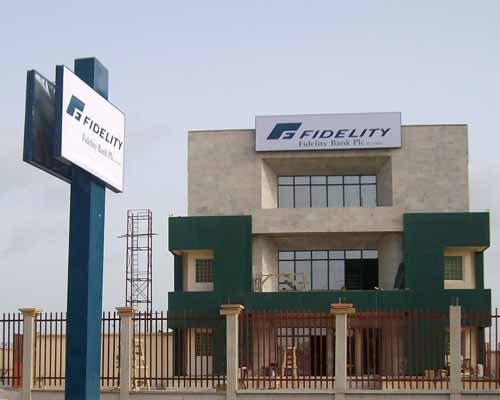- Caps three years of sustained performance
Fidelity Bank has sustained the impressive performance trajectory with the strong full year 2018 results it released recently to the Nigerian Stock Exchange (NSE) and the financial market.
In a clear demonstration of its resilience and stability, the top lender capped the year with growth in gross earnings, profitability and other key financial indicators.
The results showed that Fidelity Bank posted a five per cent growth in gross earnings from N180.2 billion in the previous year to N188.9 billion, whilst profit before tax soared by 30.6 per cent to N25.1 billion when compared with the 19.2 billion it recorded in 2017.
The bank’s profit after tax grew by 29 per cent from N17.7 billion in 2017 to N22.9 billion in 2018, whilst operating income rose by 13.9 per cent, from N85.9 billion in the previous year to N97.2 billion.
Also, its total deposit, which is a measure of consumer confidence rose by 26.3 per cent, from N775.2 billion to N979.4 billion, just as total assets grew by 24 per cent, from N1.4 trillion in 2017 to N1.7 trillion.
A 3-year summary of the bank’s results showed consistency in performance with double-digit growth year-on-year on all performance indices.
Specifically, its profit grew by 74 per cent, from N11 billion in 2016 to 19.2 billion and rose by 31 per cent last year to close at N25.1 billion.
Similarly, there was a consistent growth in gross earnings, rising from N152 billion in 2016 (19%) to N180.2 billion in 2017 and peaked at N188.8 billion.
In the same vein, savings deposits in the full year 2018 figures peaked at N228 billion, representing a 27.7 per cent growth. This double-digit growth trend on savings began to manifest far back to 2016, rising steadily by 15.2 per cent, from N155 billion to N178.5 billion in 2017.
Whilst growing its net loans and advances, which rose by 10.6 per cent to N30 billion, the bank was able to reduce its non-performing loans’ (NPLs) ratio, which dropped to 5.7 per cent, from 6.4 per cent in 2017, due to a combination of recoveries, loan write-offs and the absolute growth in the loan book. This was noteworthy because it also kept other ratios such as capital adequacy ratio (CAR) at 16.7 per cent and liquidity ratio at 39 per cent within regulatory thresholds.
These set of numbers delivered year-on-year, can be attributed to the, “disciplined balance sheet management, strategic cost reduction, increased focus on the corporate, commercial, SME segments and continued execution of our medium-term strategy,” Fidelity Bank’s CEO, Mr. Nnamdi Okonkwo said.
Since assuming office in 2014, Okonkwo has transformed Fidelity Bank significantly, pursuing a digital retail banking approach whilst focusing on niche markets.
“We are growing our market share with continued traction in our chosen business segments. Consistent with previous years, we recorded double digits in interest income on our liquid assets, digital banking, FX and other income lines,” he added.
Okonkwo was also very enthused with the progress of its digital banking play, saying: “With over 42 per cent of customers now enrolled in the bank’s mobile/ internet banking products and more than 81 per cent of total transactions done on digital platforms, resulting in 25% of fee-based income coming from digital banking.”
Meanwhile analysts report on the Fidelity Bank full year 2018 results have been very positive. Rencap, which rated the results good, said profit before tax of N25.1 billion and profit after tax of N22.9 billion, “were ahead of our estimates by three per cent and six per cent respectively.”
It also noted that the bank’s Return on Equity (RoE) of 11.6 per cent in 2018 was higher than the 9.2 per cent recorded in 2017.
Source: THISDAY













